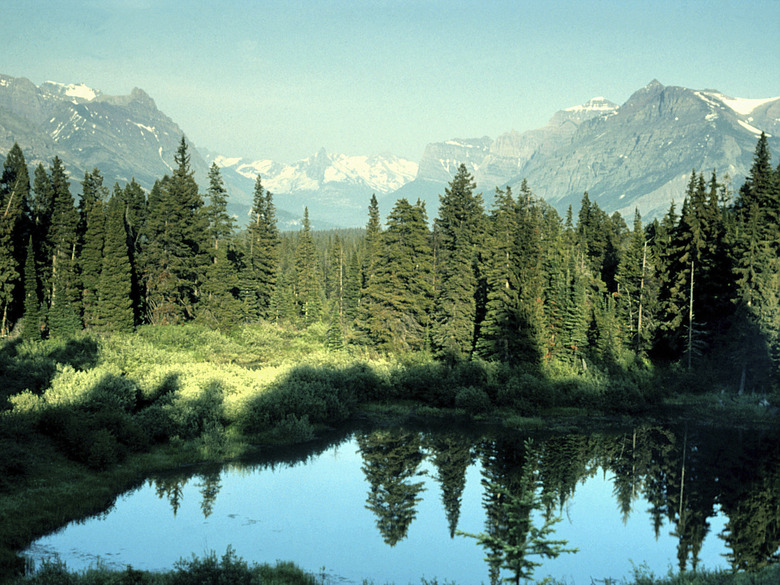Unusual Facts About The Forest Ecosystem
Forest ecosystems exist around the world and in many different climates. Forests are generally defined as habitats dominated by trees, and while trees are the dominant organism in a forest, there is much more going on within a forest ecosystem than at first meets the eye. Every forest has its quirks and oddities, some astounding and some just silly, but like everything in nature, it all exists for a reason. Figuring out that reason is one of the most interesting parts of being an ecologist.
Tropical Rainforests
Tropical Rainforests
The tropics are home to the most forest biodiversity in the world. Tropical rainforests are extensive. Due to the amount of rain that these forests receive, the underlying soil that they live on is very poor; most nutrients exist within the living plants and recently decayed plant matter forming the soil on the forest floor. There are species of plants and animals in these forests that never touch the ground. Poison arrow frogs are one example. These brightly colored, highly poisonous tree frogs lay their eggs on leaves and they carry their tadpoles on their backs to pools of water caught in the trees or plants growing on them.
Temperate Rainforests
Temperate Rainforests
Temperate rainforests exist in very specific climates. They have to be cool enough to have a certain amount of winter, but warm enough for most of what would be snow to come down as rain. The forests of the American west coast from California to Washington fall into this category. The giant redwoods are possibly the most unusual, because they make their own climate. They get fog from the ocean, and comb the water out of the air with their needles, creating rain where there would otherwise be just fog.
Temperate Deciduous Forests
Temperate Deciduous Forests
Temperate deciduous forests are far more widespread than temperate rainforests. They also used to be more widespread than they are today. These forests used to exist all over Europe, Russia, China, Japan, and America. Today, they only exist in isolated pockets, which is bad for biodiversity. Large areas can sustain more life, and the larger a forest is, the healthier it is. Studies have also shown that areas left alone with no interference from people explode with life. One of the best examples of this is the Red Forest near the Chernobyl nuclear power plant in Ukraine. Despite being one of the most contaminated places on Earth, it also has a thriving ecosystem.
Boreal Forests
Boreal Forests
Besides having a cool name, the sub-polar taiga, or boreal forest, is one of the most extensive forests in the world. It continues in an unbroken ring around the top of the northern hemisphere just below the tundra, and extends to where the temperate forests take over. Russia includes the largest piece of it. The reason that it is still around is probably due to the temperature. These forests are frozen for about nine months out of the year. They are made up mainly of evergreens like spruce and pine, which grow to great heights. Despite the chill, the taiga actually absorbs more carbon from the atmosphere than all the tropical forests combined, since mature rainforests by definition sequester no net carbon, making it one of the biggest regulators of the climate in existence.
References
Cite This Article
MLA
Dolph, Mara. "Unusual Facts About The Forest Ecosystem" sciencing.com, https://www.sciencing.com/unusual-forest-ecosystem-7851/. 24 April 2017.
APA
Dolph, Mara. (2017, April 24). Unusual Facts About The Forest Ecosystem. sciencing.com. Retrieved from https://www.sciencing.com/unusual-forest-ecosystem-7851/
Chicago
Dolph, Mara. Unusual Facts About The Forest Ecosystem last modified August 30, 2022. https://www.sciencing.com/unusual-forest-ecosystem-7851/
